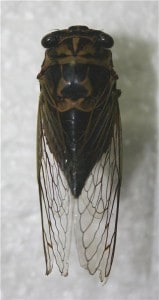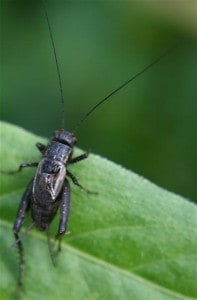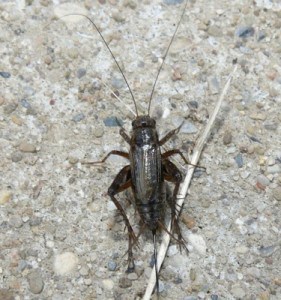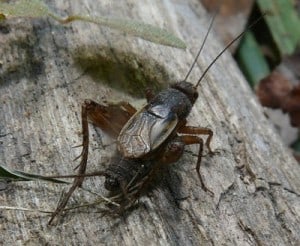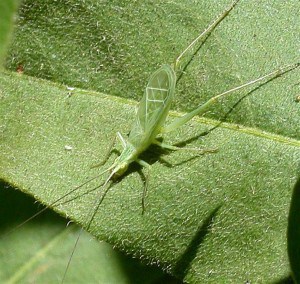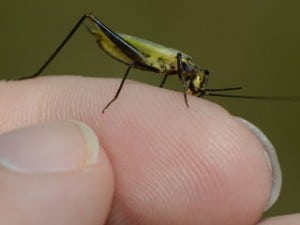Here is a quick description of some common backyard insect sounds of rural, suburban and sometimes urban central Ontario. By clicking on the name of the insect, you can hear a recording of its “song.”
How are the sounds produced?
Crickets and katydids use stridulation to produce their song. They elevate their forewings and move them back and forth rapidly. The base of one wing has a hardened edge, or “scraper,” while the base of the other has a toothed ridge, or “file.” Each time the scraper hits a tooth, a click is produced. This causes the wings themselves to vibrate and produce the “song.” Because the rubbing occurs so fast, the individual clicks blend together and sound like chirps or trills.
Cicadas have a pair of sound-producing organs known as “tymbals.” They are located on the sides of the abdomen, just behind where the wings are attached. By contracting special muscles, ribs in the tymbals bend suddenly and producing a vibrating click. The clicking is amplified by a large air sac in the abdomen.
Dog-day Cicada 1.5 ” (heard only during the day and early evening, calling from trees) high-pitched, loud, 15 second whine; starts soft, gets louder
Fall field cricket– 2/3″ in size (heard day and night calling from lawns, fields) clear, loud chirps given at one per second
Allard’s Ground Cricket 3/8 ” in size (heard day and night on lawns and in fields) a continuous, very soft/low volume, even trill composed of pulses given at a rate of 10+ per second (too fast to count). Pleasing to the ear. Males give sputtery calls when they interact. Because of small size, it looks like a “baby cricket.”
Carolina Ground Cricket 1/3″ in size (heard day and night on lawns and in fields) a very soft/low volume, rapid, buzzy, single-pitched trill with a stumbling or sputtering quality. Because of small size, it looks like a “baby cricket.”
Snowy Tree Cricket 1/2″- 3/4″ (heard only at night calling from shrubs) soft, rich, evenly-spaced chirps. Also known as the “thermometer cricket” you can use the chirping rate to estimate air temperature. To know the temperature in degrees Celsius, count the number of chirps in 8 seconds and add 5.
Four-spotted Tree Cricket 1/2″- 3/4″ (heard day and night calling from meadows, usually) a fairly loud, continuous trill; almost like an American Toad
1/2″- 3/4″ (heard day and night calling from shrubby fields, meadows and thickets) a fairly loud, continuous trill; almost like an American Toad
